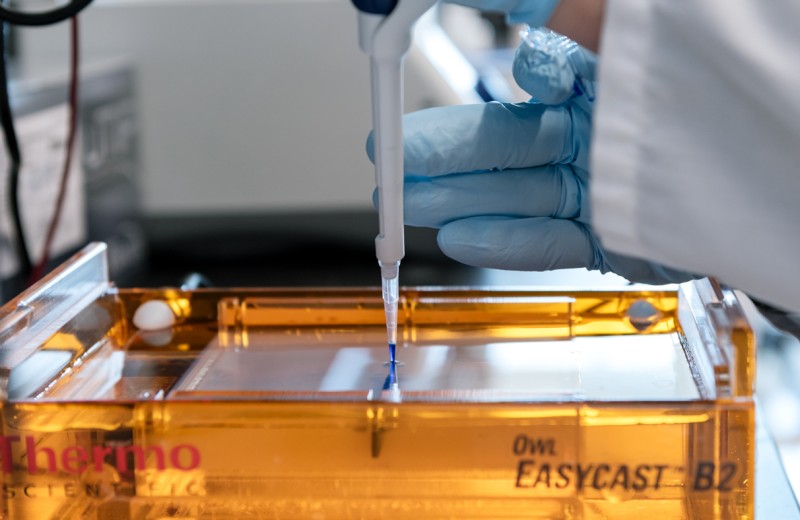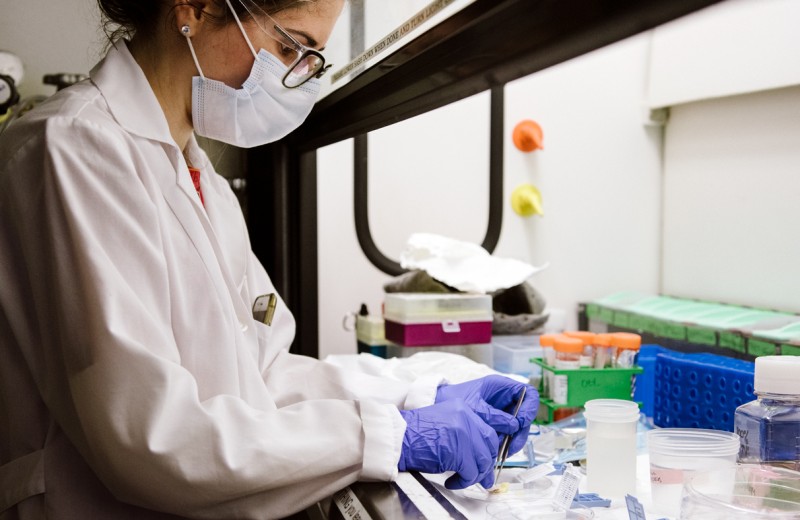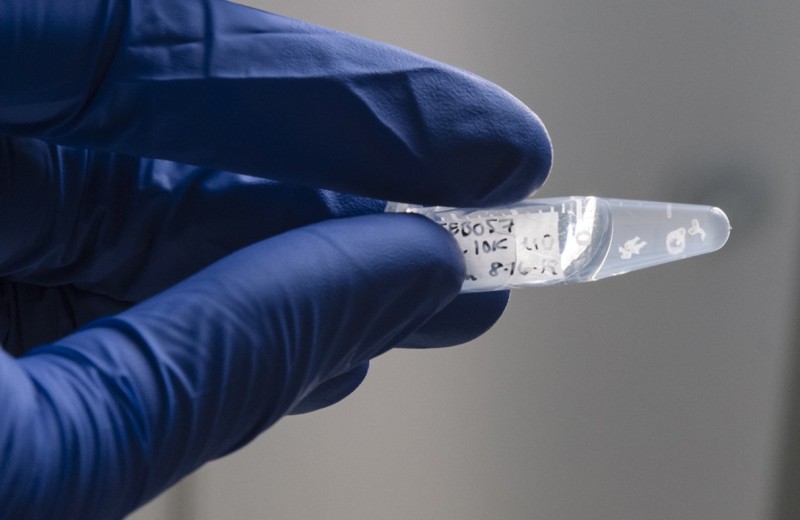Gladstone NOW: The Campaign Join Us on the Journey✕

Oriane Matthys is a graduate student in the McDevitt lab. She is enrolled in a joint PhD program in bioengineering with UC Berkeley and UCSF. [Photo: Chris Goodfellow, Gladstone Institutes]
What brought you to Gladstone?
I followed the McDevitt Lab to Gladstone. I originally planned to start my PhD studies with Todd at Georgia Tech, but when he told me his lab was moving to the Bay Area, I jumped at the opportunity to join them. I started working at Gladstone as a research associate when the lab first moved in January, and then I began the UC Berkeley–UCSF Graduate Program in Bioengineering last August.
What do you like about Gladstone?
Our lab was immediately welcomed into Gladstone, which made the transition easy and enjoyable. We are also surrounded by a small, close group of scientists who have fostered a unique community that I feel lucky to learn from every day. In addition, the incredibly collaborative environment at Gladstone has already enabled our lab to partake in new and exciting projects. I also love being able to give back to Gladstone and the San Francisco community as a part of the Student Outreach Committee.
Were you interested in science as a child?
I have been interested in science for as long as I can remember. Both of my parents are in academia (chemistry and mechanical engineering), so I have many childhood memories of spending time in their labs. In elementary school, I had the coolest science fair projects, from examining store-bought chicken for antibiotic-resistant bacteria to testing Santa Barbara beach water for coliform and Escherichia coli.
Why did you decide to go to graduate school?
The biggest reason I chose to attend graduate school is that I have always enjoyed research. I specifically decided to pursue stem cell engineering after conducting biomaterials and biomechanics research as an undergraduate. My research focused on creating self-healing biomaterials that increase the lifetime of total joint replacements. However, I began to realize that the more long-term and sustainable alternative to orthopedic implants was to harness the body’s potential to renew and regenerate. I am extremely excited to now be working on microscale tissue constructs of the human myocardium, which might be used to study aspects of human developmental biology and serve as novel substrates for drug screening.
What or who influenced your decision to work in science?
I can attribute my interest in science to my early and repeated exposure to research and engineering. I initially pursued mechanical engineering and robotics in high school, and I discovered how much I enjoy the design and evolution process of engineering. However, after a summer internship in a molecular biology lab, I realized the tangible benefit that biological research could have in medicine, and I became increasingly interested in medical applications and regenerative therapies. Combining engineering with medical research motivated me to study bioengineering at the undergraduate and graduate levels.
What do you do when you are not working in the lab?
I love to travel. Before starting at Gladstone, I spent 3 months backpacking around Southeast Asia, which was an amazing experience. Next summer, I hope to spend a few days backpacking the Havasupai Falls Trail in Arizona. In the Bay Area, I enjoy trying new restaurants and cooking new cuisines at home. I am also trying to venture up to Tahoe as often as I can this winter for skiing.
If you could learn to do anything, what would it be?
I would love to learn more about photography. When I was younger, my dream job was to be a photojournalist for National Geographic. That, or open a restaurant.
What is your hidden/unique talent?
Timing the REI sales just right.
Name one thing that not many people know about you.
I went to Duke University as an undergraduate, so I am an avid Duke basketball fan. One year I “tented”—lined up all day and slept in a tent at night with a group of students—for 6 weeks straight just to attend the Duke-UNC home game. We won!
If you could meet any scientist from any point in time, who would it be and why?
I would want to meet my grandfather, Warren Lee Butler. My mother’s father was a biophysicist who studied at Reed College and the University of Chicago before being hired as one of the first biology professors at UC San Diego. He was elected to the National Academy of Sciences and the American Academy of Arts and Sciences at a young age, but even more impressive than that are the stories I would hear about him growing up. He lost an arm and a leg at the age of 18 in World War II, and he refused to let that interfere with his life and work. In fact, he would use his prosthetic arm to directly grab hot flasks and handle liquid nitrogen.
Mini-Livers on a Chip
Mini-Livers on a Chip
A new platform designed by Gladstone scientists for studying how the immune system responds to hepatitis C virus could speed the hunt for a vaccine
News Release Research (Publication) Hepatitis C Infectious Disease McDevitt Lab Ott Lab OrganoidsIt Takes Guts to Make a Heart
It Takes Guts to Make a Heart
Gladstone scientists create novel organoids that open new doors for understanding crosstalk between tissues during human development
News Release Research (Publication) Cardiovascular Disease McDevitt Lab OrganoidsHow Do Developing Spinal Cords Choose “Heads” or “Tails”?
How Do Developing Spinal Cords Choose “Heads” or “Tails”?
A new human organoid developed by Gladstone scientists mimics one of the key steps in early embryonic development
News Release Research (Publication) Cardiovascular Disease McDevitt Lab CRISPR/Gene Editing Stem Cells/iPSCs



